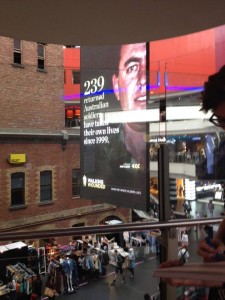I wanted to create something that was true to living inside of my mind. My mind operates on two levels; reflection and observation.
To achieve this idea, I essentially created two films. One of footage that I had created, and another of me viewing it.
The act of ‘watching’ myself is a metaphor for the reflective process. My mind is constantly presenting imagery that I am familiar with through past experience, in this case, a walk I took through the wilderness. With this comes reflection. The two videos, set in day and night, were edited into a montage to capture how one thought can shift into different directions. My head is placed below the screen to look like my mind is at work in this process.
Analysing one particular thing in my head, in this case my cat, is true to the process of observation that I endure on a everyday basis. Again, the images were edited into a montage to show how my mind reacts to one thing in a thousand different ways. The progressive speed is symbolic of how initial analysis can descend into psychological chaos.
The two subjects I focus on; forests and cats, were chosen to highlight my fascination of the ‘real and natural’ world rather than the ‘superficial’ one we currently live in.
The “I’ve Had Too Much Time To Think” text appearing above my head is a moment of self-realisation. The truth is, no matter how deep we delve into something, we are still searching for answers. It is also a comment on how I tend to ignore action and prioritise thought.
While the creative process was successful, editing was pure hell. I would have also preferred to use a projector rather than a television (I originally planned to), and to achieve Kubrickian-esque symmetry.
Project Brief 2 from Ryan Rosenberg on Vimeo.


